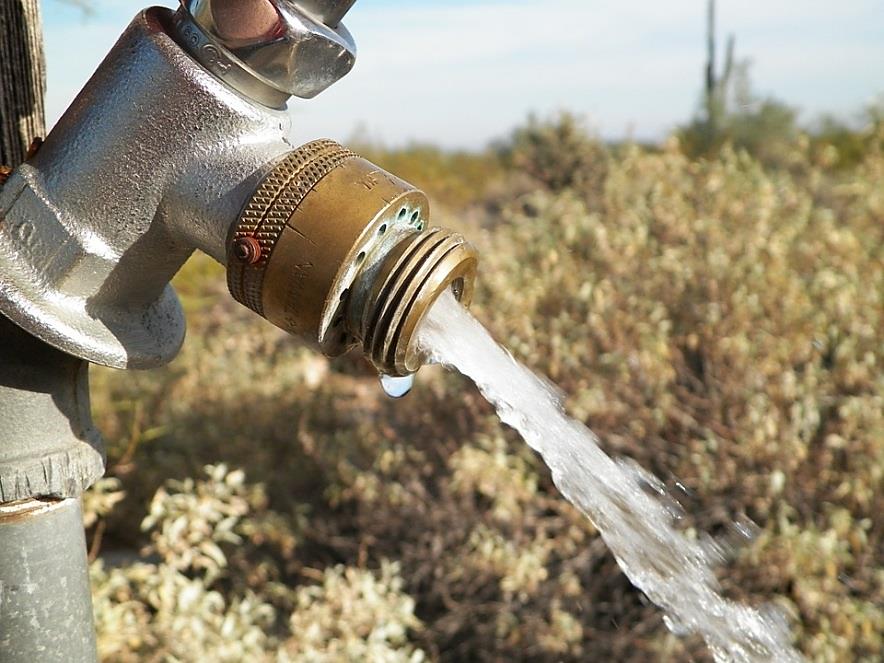
by Fern Shaw | Jul 24, 2018 | Africa Trust, water cooler, Water Coolers
There’s a quote in a meme that’s been doing the rounds on social media for a few years now. It shows a group of women and girls carrying water in containers balancing on their heads taken as they walk towards the photographer. The quote reads:

People experience a lack of water resources, access to water and prolonged drought across the globe, and although we may have all needed to fetch and carry water at times throughout our lives, for millions of people this is not a temporary situation but a daily occurrence.
According to a 2007 report from FAO around 2 billion people, or almost one-fifth of the world’s population, live in areas of scarcity. Another 1.6 billion people, or almost one quarter of the world’s population, face economic water shortage (where countries lack the necessary infrastructure to take water from rivers and aquifers).
As an example, in drought stricken regions throughout Africa, like in rural Zimbabwe, most households have to travel up to 7 miles to the nearest water source.
There is hope though, with organisations across the world committed to combating dire water shortages brought about by climate change and other natural phenomenon.
Two such organisations are Christian Aid and the Africa Trust. Working alongside stakeholders such as AquAid, these two charities have for decades provided solutions that bring clean water to thousands of communities around the globe.
If you are interested in finding out how having a water cooler from AquAid provides access to clean water to people in need, for life, please get in touch. We would be delighted to assist.
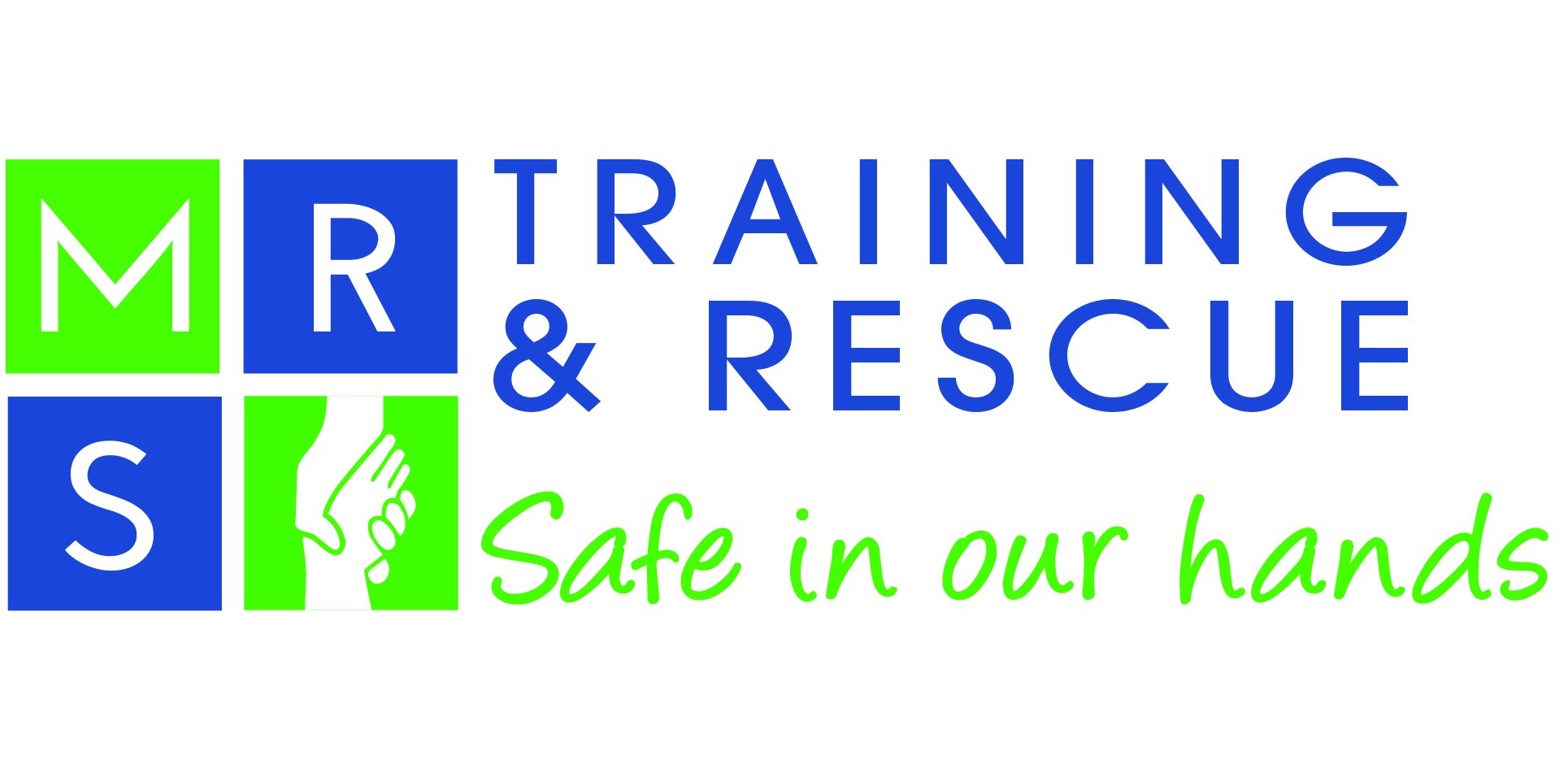
by Fern Shaw | Jul 23, 2018 | water cooler, Water Coolers
At AquAid, we’ve been in the business of water provision for over 20 years, supplying a broad range of high quality water coolers and drinking water to customers throughout the UK.
We value our customers as we understand that they are the backbone to our business, enabling us to grow from our humble beginnings in 1998 to now, one of the UK’s largest water cooler suppliers.
Just as important to us, and an integral part of our business ethos since we began, is our commitment to helping those in need. In this manner AquAid have, to date, donated more than £12 million and have helped more than 5 million people.
Another organisation, and a valued customer, committed to helping people in need is MRS Training & Rescue.
About MRS Training & Rescue
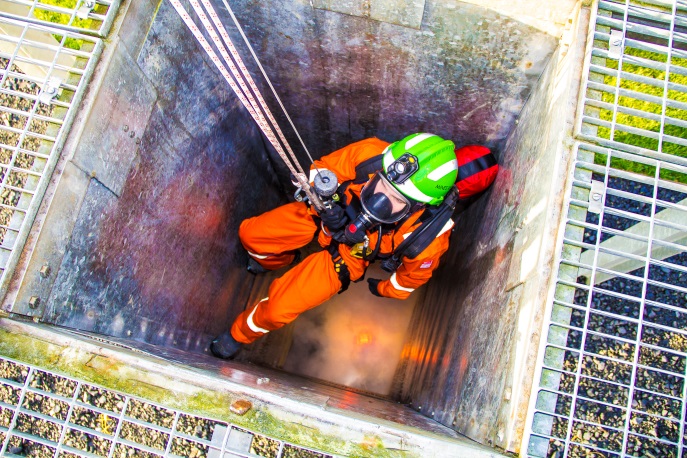 For over 100 years, MRS Training & Rescue (formerly known as Mines Rescue Service), has developed specialist skills, experience and knowledge gained from working in difficult and potentially dangerous environments, to effect the rescue and escape of mine workers from underground.
For over 100 years, MRS Training & Rescue (formerly known as Mines Rescue Service), has developed specialist skills, experience and knowledge gained from working in difficult and potentially dangerous environments, to effect the rescue and escape of mine workers from underground.
However, given the gradual decline of the coal mines over many years, they have been able to expand and diversify to meet the needs of today’s health and safety market. MRS Training & Rescue have been able to secure long term success by leveraging their expertise, and have branched out from underground mining into providing unique rescue services, specialist equipment, consultancy and a comprehensive range of accredited health and safety related products, training and services to a wide range of industries, including nuclear, aerospace, manufacturing and utilities.
MRS Training & Rescue and the Elephant Pump
In order to keep the MRS Training & Rescue team healthy and hydrated while at work, they decided to invest in water coolers from AquAid at their sites at Mansfield, Swadlincote and Knottingley. With each water cooler and bottle of water purchased a donation has been made to the Africa Trust, an AquAid funded charity.
This means that thanks to MRS Training & Rescue’s custom, a water well (affectionately known as an Elephant Pump) will be installed in Africa and will provide safe, clean drinking water for hundreds of people in a community.
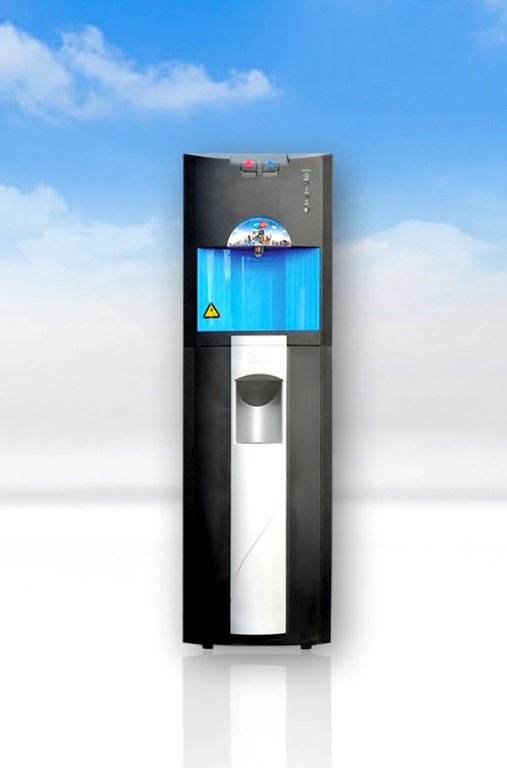
by Fern Shaw | Jul 16, 2018 | mains fed water cooler, water cooler, Water Coolers
Having the right water dispenser is vitally important. At AquAid we’re here to help guide you about which machine is right for your drinking water needs – Mains Fed or Bottle Fed? Floor Standing or Desktop?
It’s easy to see why the Floor Standing AquAid Fusion is one of AquAid’s most popular water dispensers.
With an ultra-stylish design, this mains-fed cooler combines both chilled fresh and piping hot fresh water in one streamlined machine and is proving to be extremely popular in work spaces of up to 10-15 staff in meeting their requirements for both chilled and boiling water.
The on-trend dark graphite colour of the AquAid Fusion makes it suitable for use in any area in the workplace, including your office, kitchen or factory; and the Hygiene Guard silver impregnated dispense tap reduces bacteria transfer and cross contamination.
Desktop
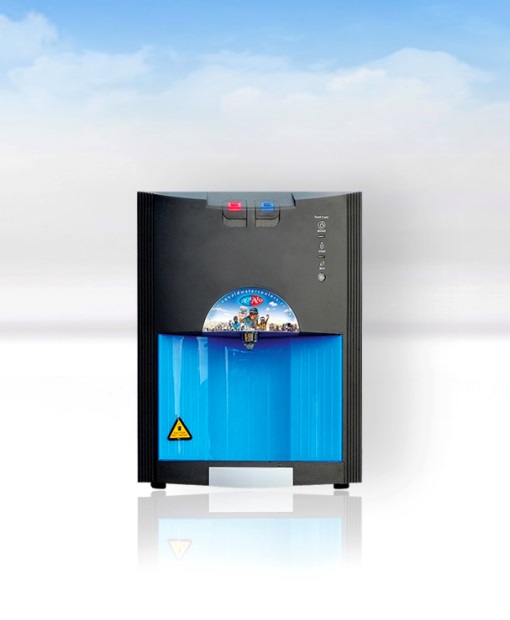 Like the Fusion Floor Standing, but are short on space? Then the Desktop version is perfect for your requirements. This streamlined dispenser requires a minimal 488mm(H) in height of countertop space and complements most work areas. Once installed, the Fusion will easily dispense up to 18ℓ of chilled drinking water and up to 7 cups of boiling water.
Like the Fusion Floor Standing, but are short on space? Then the Desktop version is perfect for your requirements. This streamlined dispenser requires a minimal 488mm(H) in height of countertop space and complements most work areas. Once installed, the Fusion will easily dispense up to 18ℓ of chilled drinking water and up to 7 cups of boiling water.
This innovative machine also offers a host of other features: a proven energy consumption reduction of 25%; an integral cup dispenser, and the Hygiene Guard silver impregnated dispense tap reduces bacteria transfer and cross contamination.
Installation and servicing
Not only do we provide top quality water coolers such as the Fusion, we also install and service the machines for you. All of our machines are installed by our EDWCA accredited service technicians and as per the EDWCA guidelines; we sanitise all mains-fed water dispensers every 6 months.
For all your water and water cooler requirements, contact us at AquAid today. With over 20 years of experience and more than 22 branches nationwide, we’re perfectly positioned to provide you with the right water dispenser to meet your drinking water requirements.
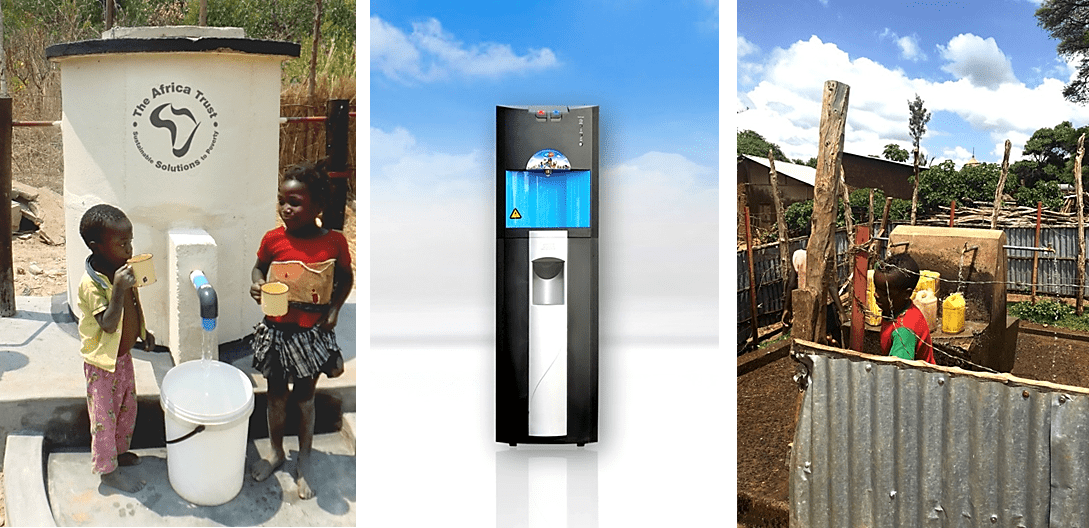
by Fern Shaw | Jul 16, 2018 | Africa Trust, Christian Aid, Water, water cooler, Water Coolers
As the temperatures soar throughout the UK, so does the demand for chilled, refreshing drinking water.
At AquAid, where we’ve been in the business of providing a range of high quality water coolers and water both spring and bottled at source for over 20 years, we understand this more than most. That’s why it’s important to us to be able to ensure that we’re able to offer the very best in both water dispensers and bottled water.
But we’re not just about the provision on water coolers – we also firmly believe that providing water to those that may not necessarily have access to water as we do – is absolutely vital.
If we struggle with keeping hydrated in this heat, take a minute and imagine what it would be like experiencing hot weather but not having access, not only to drinking water, but any water, at all. Sadly, this is a reality for millions of people across the globe, and in particular, in many Third World countries.
Then, to this rather scary scenario, add this: If you want drinking water, you need to walk to find it. And not just down to the corner caf, but a few miles. If you’re lucky enough to find a water source, you can’t just buy a bottle of water (or any liquid for that matter); you have to fill the bucket that you brought with you and walk back home, carrying the now full bucket.
Not enough Bear Grylls for you? The water that you’ve just fetched is most likely not fresh, not clean and may be so full of bacteria, that even while trying to hydrate yourself, you may very well be making yourself ill without even realising it.
Remember, this is just water for you (and possibly, members of your family) to drink. This is not water that is needed to wash your clothes or your dishes or to water your meagre produce crop with. This is just water to drink to keep you going. This is basic human survival type of stuff.
This is the day to day existence for many communities throughout the Third World and in the summer months, lack of potable water is amplified by the heat.
That’s just one of the reasons, since our rather humble beginnings in 1998, that we chose to work with sustainable charities like the Africa Trust and Christian Aid. Using donations from AquAid, both charities work tirelessly implementing sustainable water projects for communities in need.
So, although we’re always tooting our own horn about being one of the top water cooler providers in the U.K. we also (truly) believe in helping others less fortunate to help themselves. So, while we have you to thank, most valued customer, for your support and through your purchases making it possible for others to help themselves; isn’t it rather nice to know that when you’re sipping cool spring water from one of our water coolers, there’s another water well or water project being installed in Africa, bringing fresh, clean drinking water to yet another community in need?
I think so. Good on yer. Toot toot!
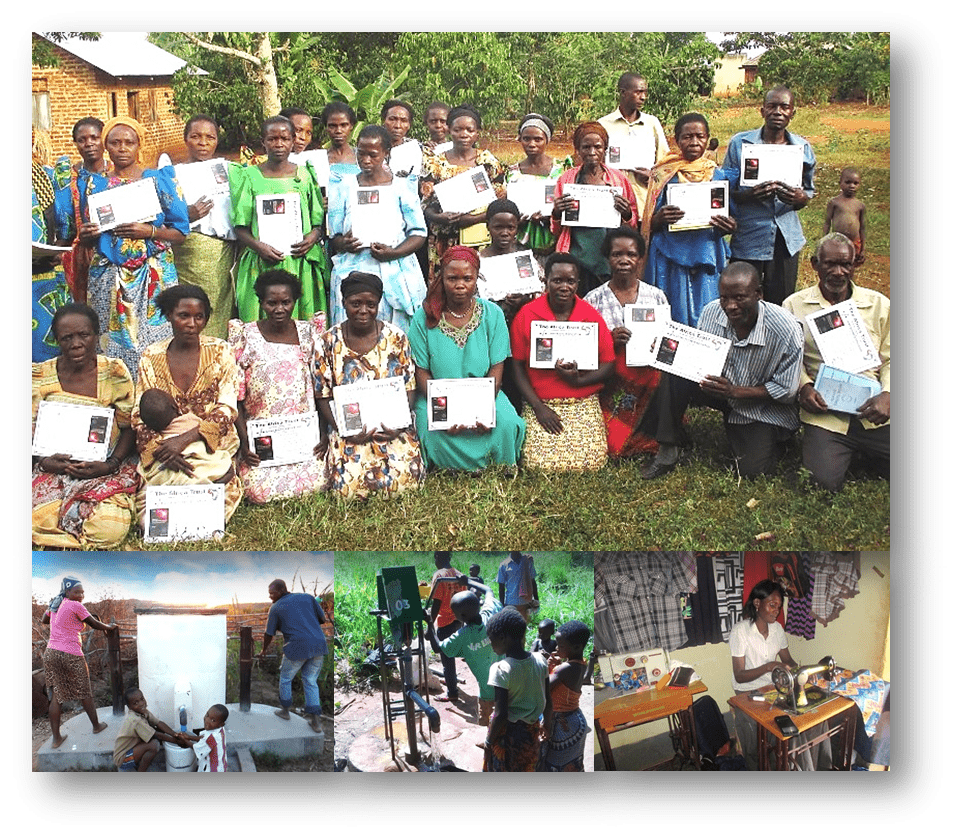
by Fern Shaw | Jun 4, 2018 | Africa Trust, aquaid, Charity, Water Coolers
Begun in 2010, the Africa Trust is an AquAid founded charity that works on the principles of wealth creation and sustainable solutions to poverty.
Since our rather humble beginnings in 1998 as a home water cooler supplier, until now, as one of the UK’s leading water cooler suppliers, helping people in need has always been an integral aspect of the AquAid ethos.
Now, in our 20th year of operations, we look back at the annual milestones that evidence the successes of our commitment to charity.

2017 IN REVIEW:
The total number of beneficiaries at the start of 2017 was 2,192,435 and 209,908 new beneficiaries were added by the end of the year. A total of 683 new pumps were installed in 2017 compared to 607 in 2016. Most of these pumps were installed in Zimbabwe with five pumps built in Tanzania and one built in Kenya.
The Africa Trust’s Elephant Pump programme is having a major positive impact on the lives of over a million Zimbabweans who collect clean drinking water and water for productive use every day. Aside from 683 new pumps installed last year, the Africa Trust continues to implement sustainable wealth creation projects. Examples are an income generating farm project which now provides a sustained and growing income stream that helps towards the cost of emergency relief. A dairy project and the bananas for fees projects continue to grow with 510 new beneficiaries added.
The Africa Trust also implements wealth creation and sustainable relief projects in:
Kenya: A business skills training programme continues to grow. One such new business started under the programme (a maize mill) now employs over a dozen HIV+ widows who would otherwise have been in desperate poverty following their husbands’ deaths due to AIDS.
Liberia: Positive feedback received about the pumps and toilets installed in previous years. A school was helped to become self-sufficient by starting a project to raise ducks and chickens.
Mozambique: The ‘Baby’ Elephant Pumps installed for use by smaller family communities are doing well.
Tanzania: Elephant Pumps; Elephant Toilets; Business Skills Training.
Uganda: Business skills training; job creation; retirement planning (thus helping break the cycle of poverty).
Contact us at AquAid to find out how becoming an AquAid customer equates to ensuring sustainable solutions to poverty and the provision of safe drinking water to those who need it most.




 For over 100 years, MRS Training & Rescue (formerly known as Mines Rescue Service), has developed specialist skills, experience and knowledge gained from working in difficult and potentially dangerous environments, to effect the rescue and escape of mine workers from underground.
For over 100 years, MRS Training & Rescue (formerly known as Mines Rescue Service), has developed specialist skills, experience and knowledge gained from working in difficult and potentially dangerous environments, to effect the rescue and escape of mine workers from underground.
 Like the Fusion Floor Standing, but are short on space? Then the Desktop version is perfect for your requirements. This streamlined dispenser requires a minimal 488mm(H) in height of countertop space and complements most work areas. Once installed, the Fusion will easily dispense up to 18ℓ of chilled drinking water and up to 7 cups of boiling water.
Like the Fusion Floor Standing, but are short on space? Then the Desktop version is perfect for your requirements. This streamlined dispenser requires a minimal 488mm(H) in height of countertop space and complements most work areas. Once installed, the Fusion will easily dispense up to 18ℓ of chilled drinking water and up to 7 cups of boiling water.

